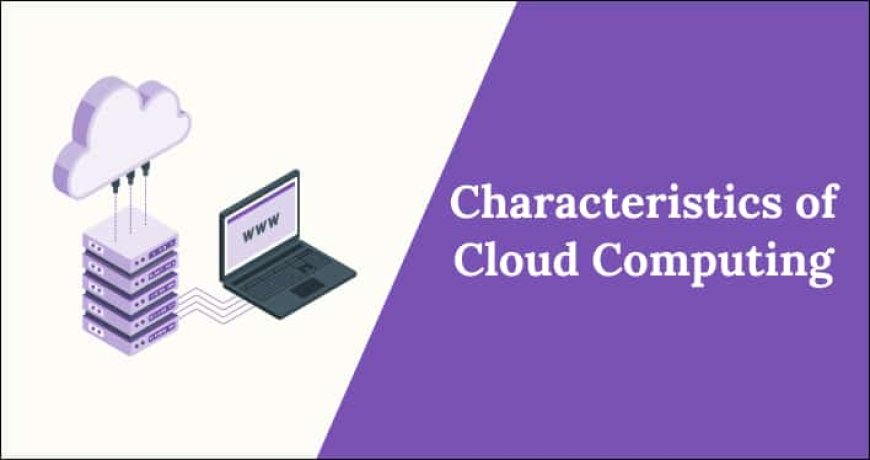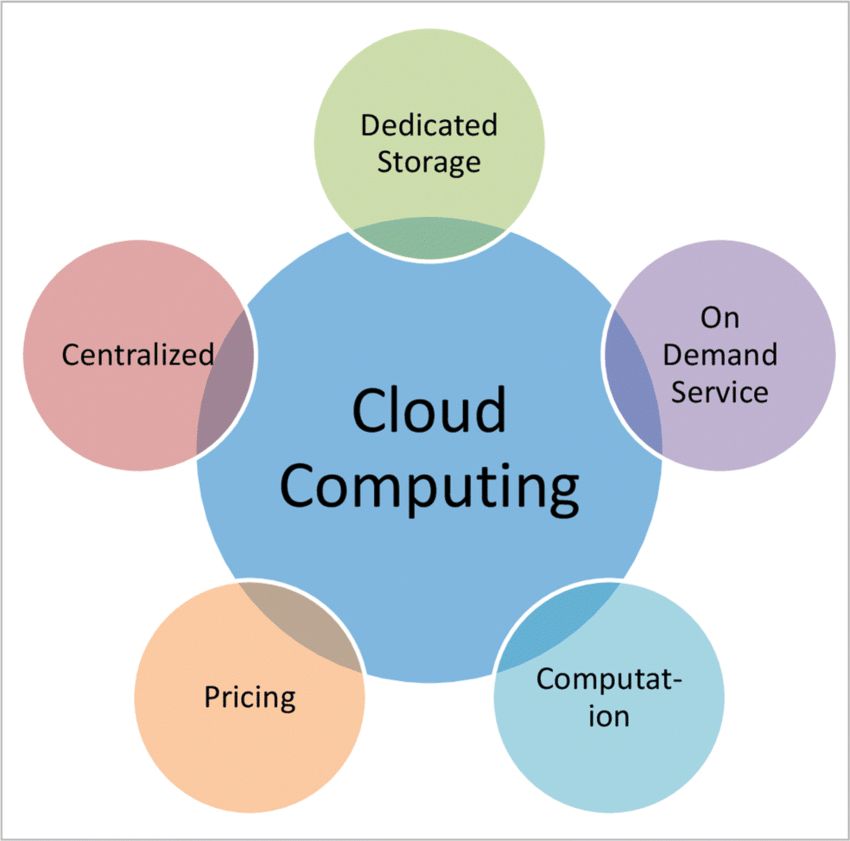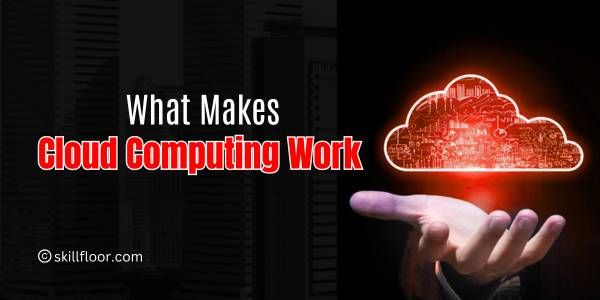Key Characteristics of Cloud Computing - Comprehensive Guide
Explore the fundamental features of Cloud Computing in this comprehensive guide, understanding its key characteristics and significance in the digital landscape.

Our digital environment has been significantly impacted by cloud computing, which is changing how people use services and how businesses run. We'll examine the essential features of cloud computing in this thorough tutorial, illuminating the underlying principles that make it so revolutionary.
The Evolution of Cloud Computing: Redefining Applications and Data Storage
Let's start by analyzing the current state of cloud computing. With the evolution of traditional data storage and application hosting techniques, cloud solutions with scalability and flexibility have emerged. For a variety of reasons, both individuals and businesses are welcoming the move to the cloud.
Cloud Computing: A Solution for On-Premise Challenges
The complexity of managing on-premise infrastructure is a common complication that organizations face. This complexity often leads to increased costs, time-consuming maintenance, and limited scalability. Cloud computing addresses these issues by providing a simplified and scalable alternative.
The Evolution of Cloud Computing
Cloud computing has come a long way since its inception, transforming the digital landscape and reshaping the way we interact with technology. Let's take a stroll down memory lane to explore the fascinating evolution of cloud computing.
1. Early Days - Mainframes and Client-Server Architecture
The roots of cloud computing can be traced back to the era of mainframe computers and client-server architecture. In the early days, organizations relied on large, centralized mainframes to process and manage data. However, this approach had limitations, such as high costs and restricted accessibility.
2. Birth of Virtualization
The evolution gained momentum with the advent of virtualization technology. Virtual machines allowed for the creation of multiple isolated environments on a single physical server, optimizing resource utilization. This marked a significant step towards the efficient use of computing resources.
3. Emergence of Web-Based Applications
The rise of the internet and the development of web-based applications paved the way for the next phase. Instead of relying solely on local software installations, users could access applications and services through web browsers. This shift laid the groundwork for the concept of delivering computing services over the Internet.
4. Utility Computing and Grid Computing
Utility computing and grid computing concepts further contributed to the evolution. These models focused on providing computing resources as a utility, similar to traditional services like electricity. However, they lacked the scalability and flexibility that would later become synonymous with cloud computing.
5. The Birth of Cloud Computing
The term "cloud computing" gained prominence in the mid-2000s, popularized by companies like Amazon Web Services (AWS). AWS, launched in 2006, offered scalable and flexible computing resources over the internet. This marked a turning point, as businesses could now access computing power without the need for extensive on-premise infrastructure.
6. Expansion of Cloud Services
The evolution continued with the expansion of cloud services. Providers like Microsoft Azure and Google Cloud Platform entered the scene, offering a variety of services, from storage and computation to machine learning and analytics. This diversity allowed businesses to tailor their use of cloud resources to specific needs.
7. Mobile Computing and Edge Computing
The proliferation of mobile devices and the need for real-time processing gave rise to mobile and edge computing. Cloud services extended their reach to the edge of networks, enabling faster response times and improved performance for applications and services.
8. Hybrid and Multi-Cloud Environments
Today, the evolution of cloud computing includes the prevalence of hybrid and multi-cloud environments. Organizations leverage a mix of on-premise, private cloud, and public cloud resources to create a flexible and resilient infrastructure that meets their specific requirements.
What are the key characteristics of cloud computing that make it so appealing to businesses and individuals?
Cloud computing's appeal lies in on-demand self-service, enabling users to access resources as needed. Its broad network access ensures flexibility, while resource pooling enhances efficiency. Rapid elasticity allows quick scaling, and measured service provides cost transparency, catering to diverse business and individual needs.
Let’s take a look at each type in a little more depth.

On-Demand Self-Service
Cloud computing allows users to access computing resources on demand. This means that users can provision and manage resources as needed, without requiring human intervention from service providers. It's like having a digital buffet where you can pick and choose what you need at any given moment.
Broad Network Access
Cloud services are accessible over the internet from various devices such as laptops, smartphones, and tablets. This characteristic ensures that users can connect to the cloud from virtually anywhere, making remote work and collaboration more efficient.
Resource Pooling
Cloud providers pool computing resources to serve multiple customers. This pooling allows for better efficiency and cost-effectiveness as resources are dynamically allocated based on demand. It's like carpooling for computing power – everyone gets where they need to go but with shared resources.
Rapid Elasticity
Cloud resources can be quickly and easily scaled up or down to accommodate changing workloads. This elasticity ensures that businesses can adapt to fluctuating demands, avoiding the need to invest in and maintain excess capacity during peak times.
Measured Service
Cloud computing resources are metered, and users are billed based on their usage. This pay-as-you-go model provides cost transparency and allows organizations to optimize their spending based on actual consumption. It's akin to paying for the exact amount of electricity you use rather than a fixed monthly fee.
Why are Cloud Computing Characteristics Important for Professionals?

Cloud computing characteristics hold significant importance for professionals across various industries due to their transformative impact on the way businesses operate. These key characteristics provide professionals with unparalleled advantages in terms of flexibility, efficiency, and cost-effectiveness.
Firstly, the on-demand self-service feature empowers professionals to swiftly access and manage computing resources as needed. This agility allows for quicker development cycles, enabling professionals to respond promptly to changing business requirements.
The broad network access ensures that professionals can connect to cloud services from any location, fostering remote collaboration and facilitating the modern demands of flexible working arrangements. This accessibility enhances productivity and ensures that professionals can work seamlessly across diverse environments.
Resource pooling contributes to efficiency by optimizing the use of computing resources. This characteristic allows professionals to leverage shared resources, reducing costs and minimizing the need for extensive on-premise infrastructure maintenance. It's a pragmatic approach to resource management that aligns with the dynamic nature of modern businesses.
Rapid elasticity is particularly beneficial for professionals dealing with fluctuating workloads. The ability to scale resources up or down in real time enables professionals to handle peak demands without the need for substantial upfront investments. This flexibility is especially crucial in industries with variable workloads and seasonal demands.
Lastly, the measured service characteristic ensures cost transparency and efficiency. Professionals only pay for the resources they consume, allowing for better budget management and resource optimization. This pay-as-you-go model aligns with the financial realities of businesses, preventing unnecessary expenditure on unused resources.
These cloud computing characteristics empower professionals by providing them with the tools to navigate the challenges of a dynamic business landscape. Whether it's adapting to changing workloads, fostering collaboration across geographies, or optimizing costs, these characteristics are instrumental in driving efficiency and innovation in professional settings.
The development of cloud computing has completely changed how professionals access services and how businesses run. From measured service to on-demand self-service, the essential features provide unmatched benefits. They provide professionals with cost-effectiveness, flexibility, and efficiency, which spurs innovation in the ever-changing world of contemporary business. Adopting these characteristics of cloud computing is a calculated step toward a future that is more responsive and agile than it is merely a trend.




























































